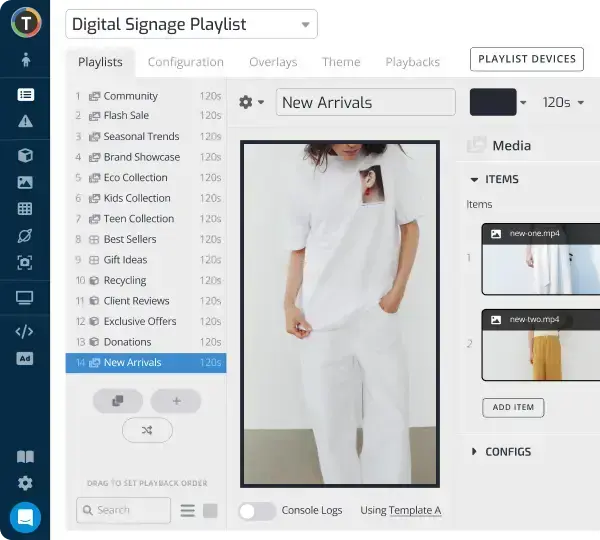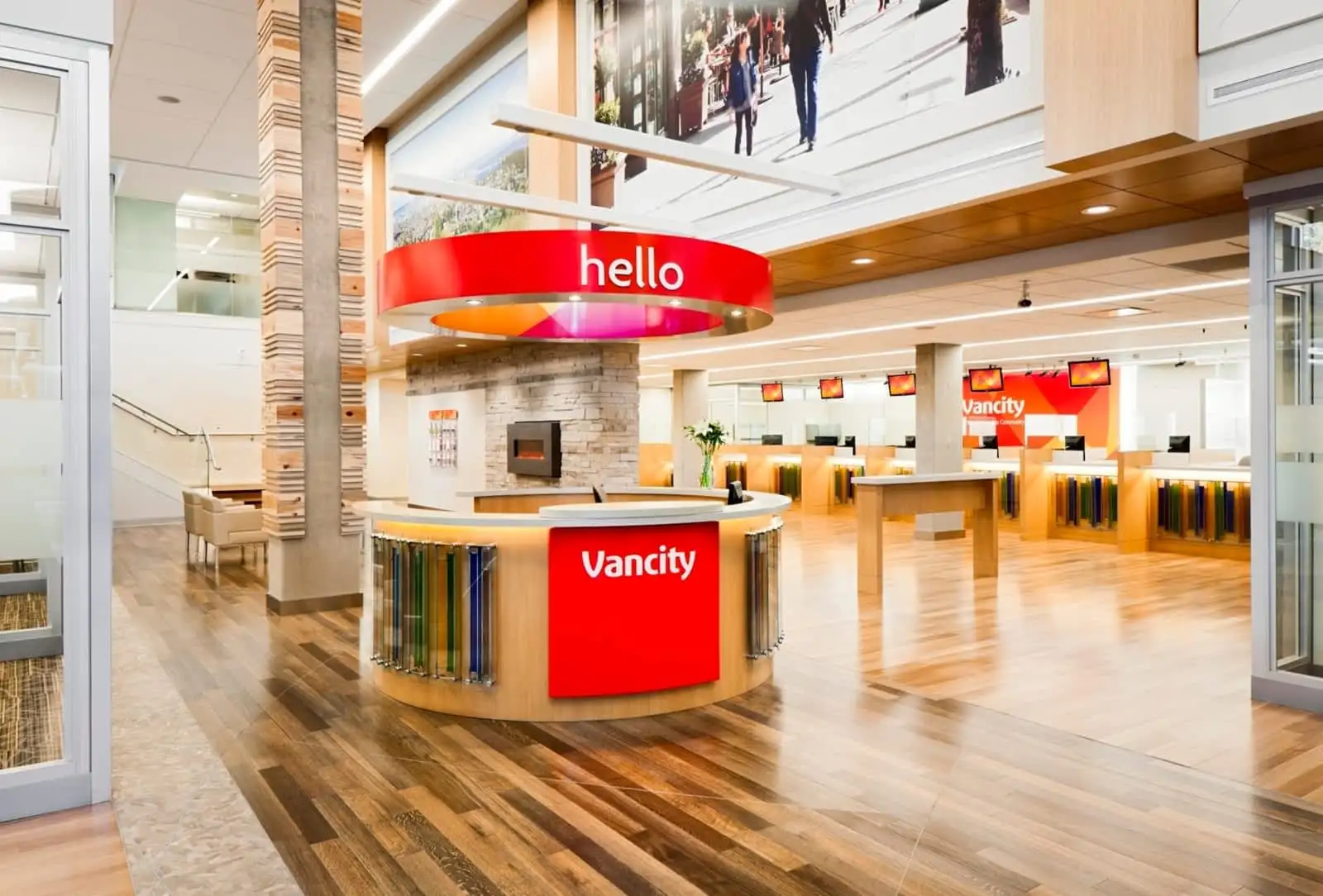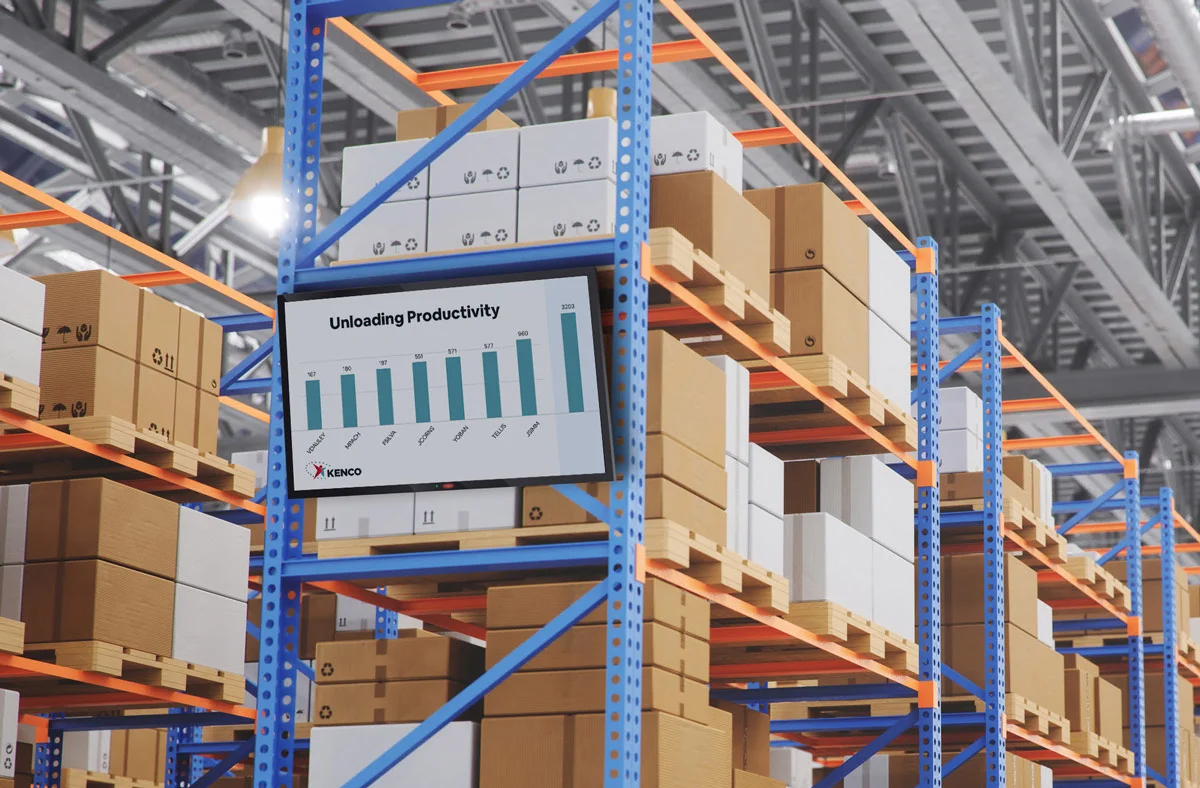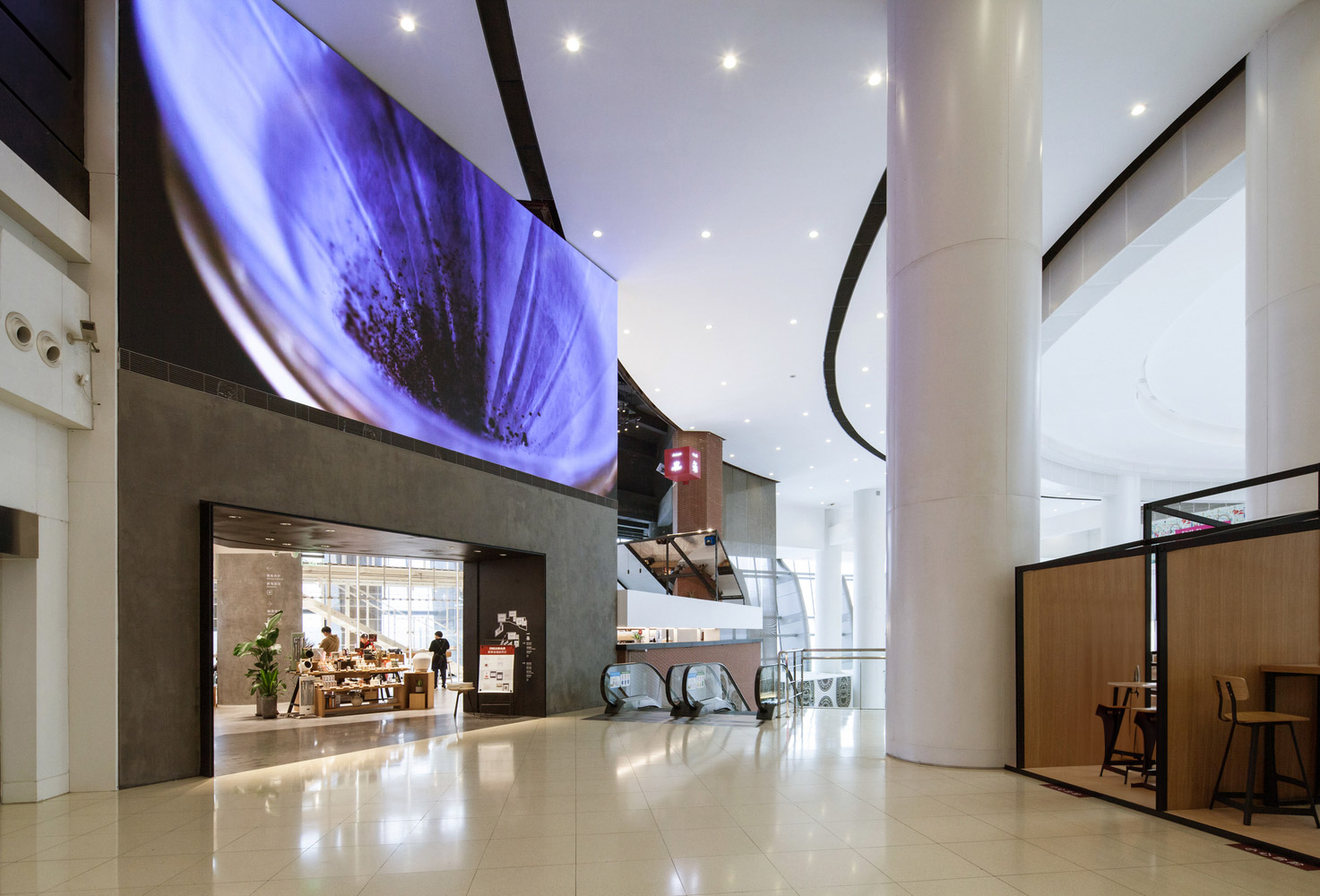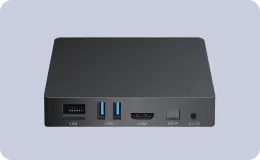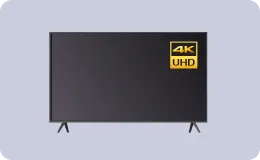Choosing the Best Digital Signage Display in 2025: Consumer vs. Commercial Models
WRITTEN BY: TelemetryTV, 02-19-2025
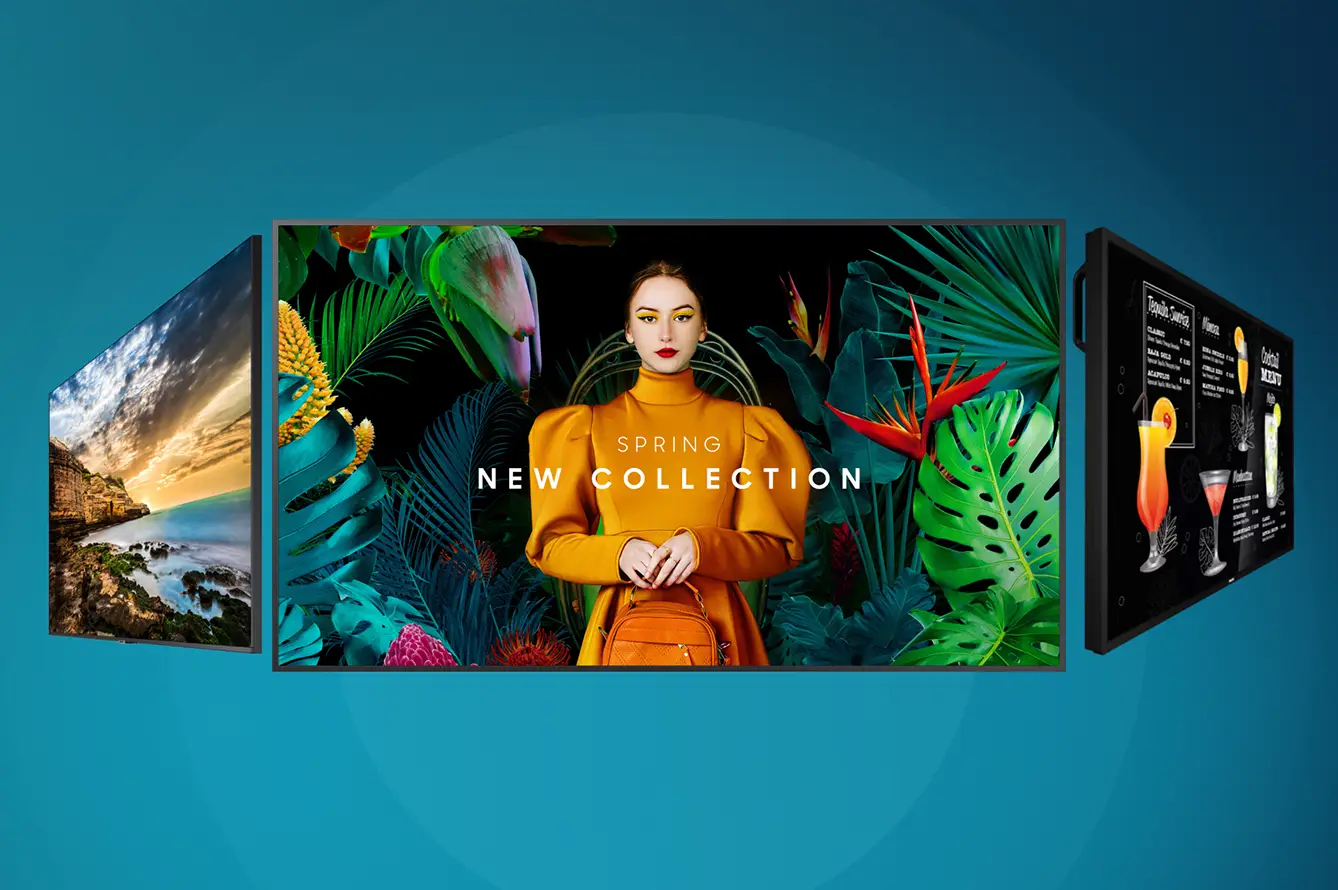
Figuring out which screen to use for your digital signage can be overwhelming. With a wide array of brands/features, it can be challenging to make a decision.
Whether you're starting from scratch and trying to determine the cost of digital signage, or you're looking to purchase a single display for your startup or hundreds of displays for your enterprise, we have you covered. This article will provide a brief summary of some of the best options we can recommend for various settings and usage scenarios.
Elevate Your Digital Signage Game
Experience how TelemetryTV can revolutionize your content and device management. Sign up for a free trial to see our comprehensive solution in action, tailored for managing diverse content, devices, and users.
Start for FreeConsumer Digital Signage Displays
While consumer TVs may not have the same level of durability and continuous operational capabilities as commercial-grade signage displays, they can still be effective in certain scenarios, which we will discuss below. For those considering this option, we recommend exploring three vendors that offer a good balance between cost and performance for digital signage purposes.
Hisense Digital Signage TVs
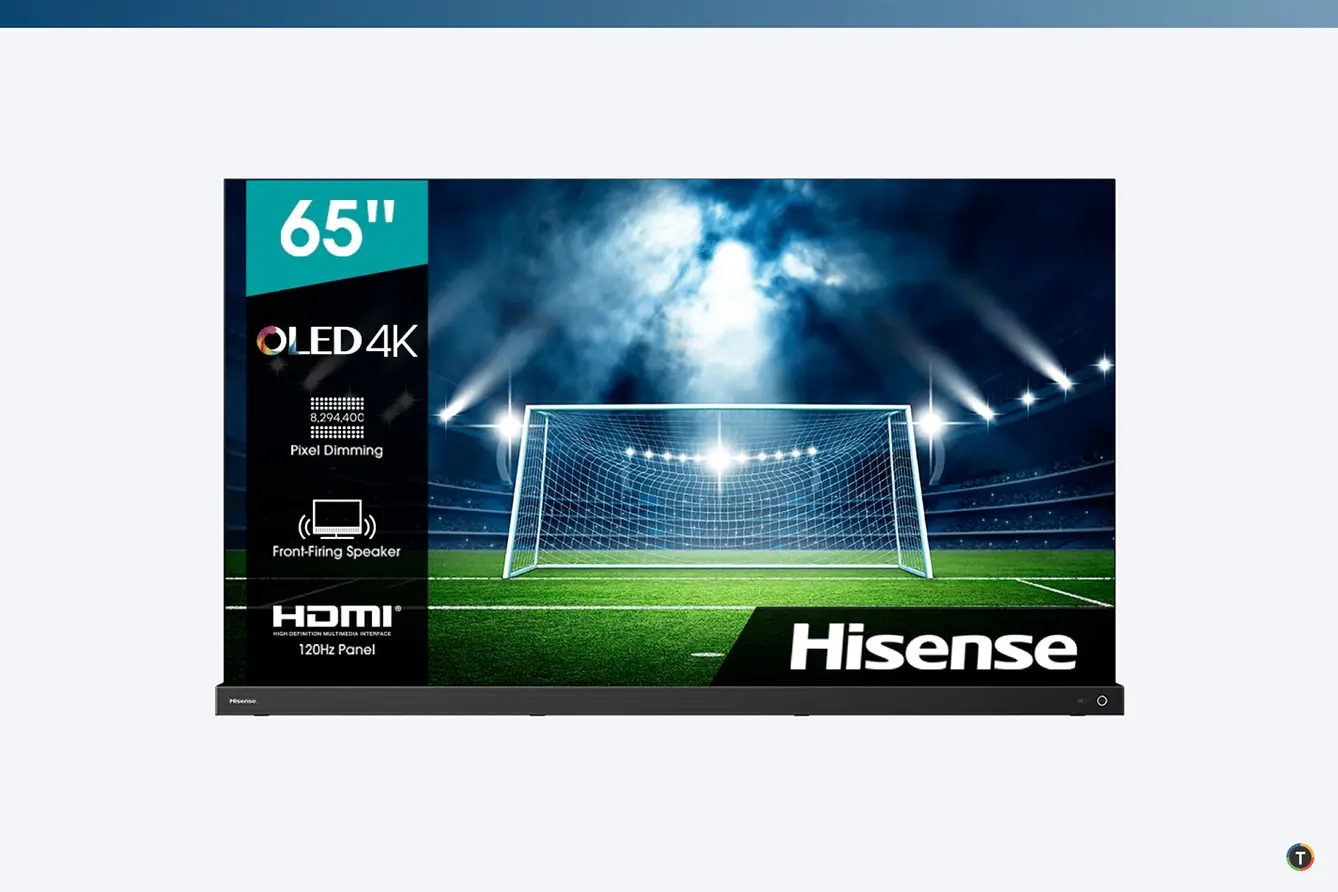
For the past few years, Hisense has become known as a manufacturer of affordable consumer TVs that offer attractive pricing and design, while maintaining an acceptable level of build quality. Although they are not made for professional digital signage settings that require 24/7 or even 16/7 operation, they can still be suitable for less demanding environments. Hisense TVs come with the Google TV operating system, which makes it easy to access the TelemetryTV digital signage software directly from the Google Play Market. Hisense's lineup includes LED and Mini-LED technologies in their ULED range, providing different levels of brightness and color accuracy.
Recommended Options
Hisense’s affordability makes their TVs an attractive option for startups seeking internal communication solutions or dashboard TVs, as well as for local businesses looking to enhance customer engagement without a significant investment. The Class A6 and Class U6 Series, now starting from around $500 for a 65-inch display, are recommended for displaying informational or educational content in settings with controlled lighting (e.g. offices, small clinics, etc.) where there is no direct sunlight.
The Quantum ULED, Class U7, and Class U8 series have a higher price starting from $800, but they are more suitable for settings where content needs to be visually appealing, such as videos and engaging images. These screens also perform well in various lighting conditions, thanks to the combination of quantum dot technology and Mini LED, offering excellent brightness for any content, even when the screen is located near a big window.
The weakest aspect of Hisense screens is their viewing angle. Although we hope this will be improved in future models, at present, we cannot recommend them for large spaces where the viewing angles of audiences may vary. In such cases, we suggest considering TCL TVs, which are priced slightly higher than Hisense.
TCL Digital Signage TVs
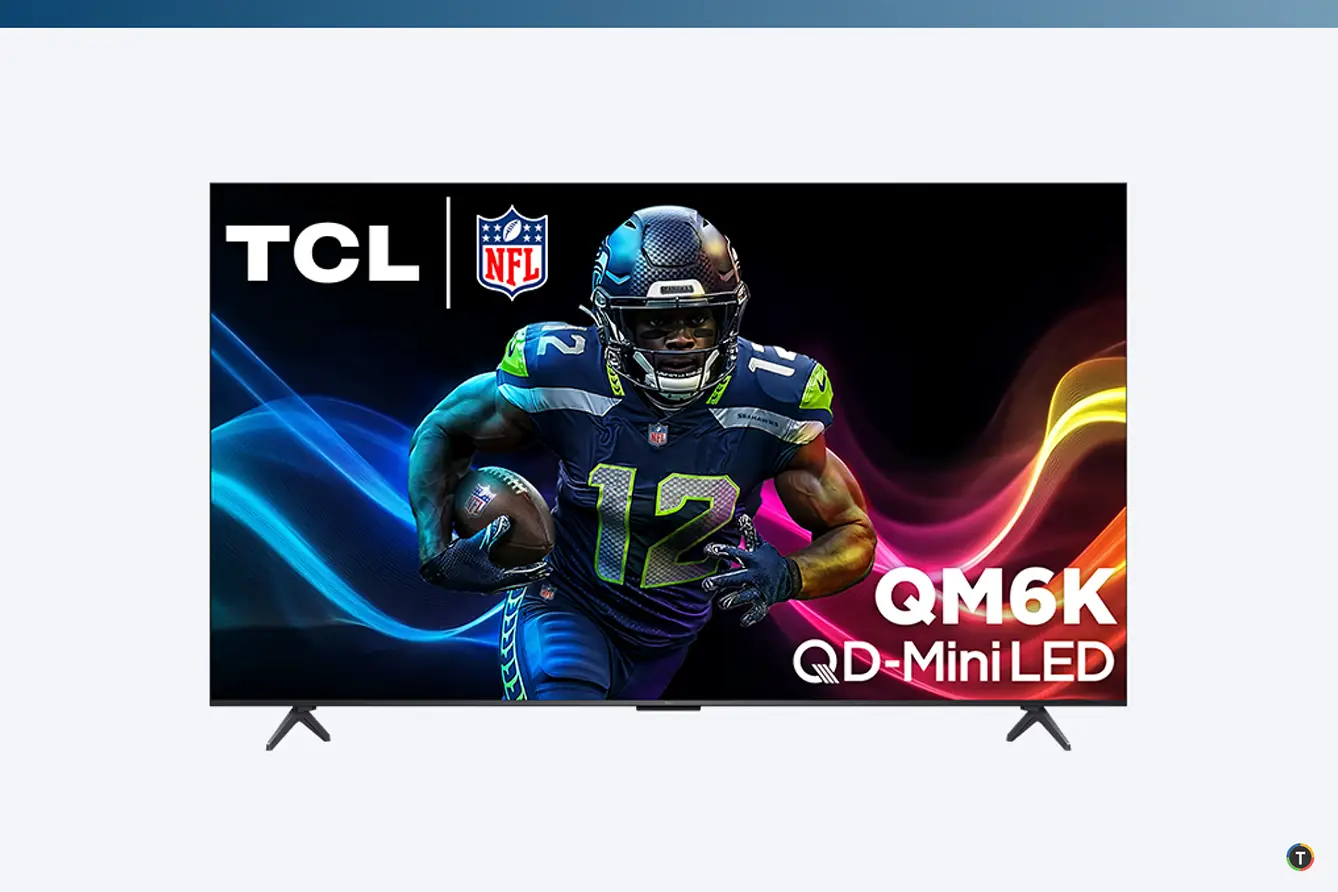
TCL, known for its mid-range consumer TVs, strikes a practical balance between cost-effectiveness and performance. While not designed for 24/7 continuous operation, their displays can function effectively for digital signage in environments that run fewer hours a day. Most TCL models are available with Google TV and Fire TV, simplifying the setup process for anyone looking to install a digital signage software like TelemetryTV. With LED, QLED, and Mini-LED technologies, TCL offers a versatile lineup that can accommodate various lighting conditions and image quality demands.
Recommended Options
TCL’s affordability makes it ideal for small and medium-sized businesses that want to deploy internal dashboards or reception area signage on a moderate budget. The S Class (or 4-Series) models, typically starting at around $500 for a 65-inch display, provide solid performance for straightforward content under normal lighting. They work well for banking, small retail, and corporate settings, as long as they are not exposed to extreme brightness or used non-stop.
For environments that demand brighter, more vibrant imagery—such as upscale boutiques or storefront displays—the newer Q Class or 5-Series and 6-Series (often labeled Q6 or Q7) deliver improved color and brightness. Pricing starts at about $800 for a 65-inch, thanks to Quantum Dot technology and, in some models, Mini-LED backlighting that ensures a vivid display even in rooms with elevated ambient light levels.
Those seeking high-impact screens with better contrast for more challenging conditions should consider TCL’s premium Mini-LED models like the QM8 series, which start at around $1,000 for a 65-inch set. These displays deliver excellent brightness and robust color accuracy, although color-critical industries (e.g. high-end fashion) may prefer SONY’s premium offerings. Ultimately, TCL provides a range of practical solutions for most signage scenarios at competitive price points.
SONY Digital Signage TVs
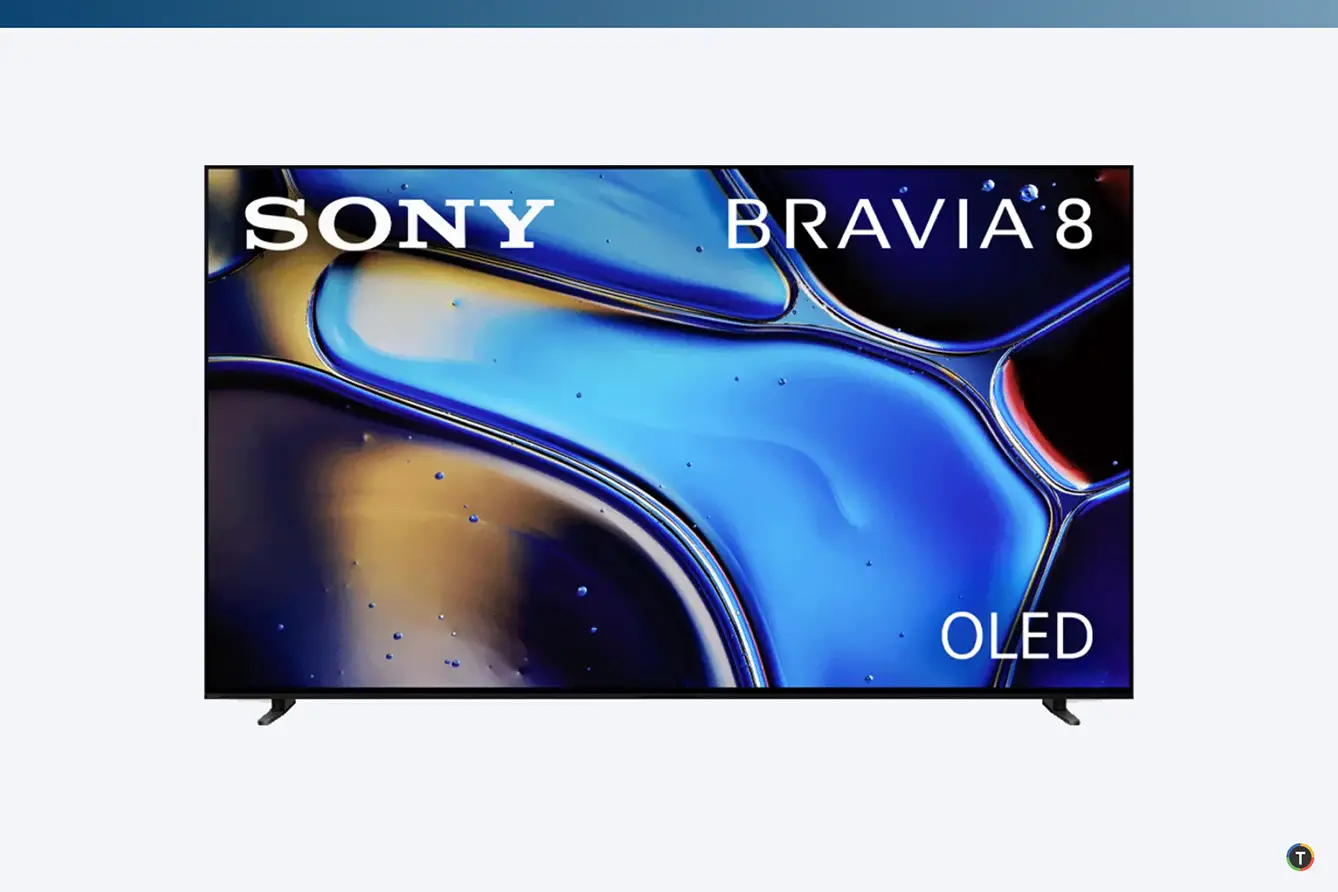
SONY stands out in the consumer TV space for its high build quality and cutting-edge picture technologies, including OLED and Mini-LED. Although these displays are not designed for continuous 24/7 usage, their robust construction and excellent color accuracy make them a popular choice for more premium signage deployments. With Google TV included on all new SONY TVs, users can easily install and run digital signage software like TelemetryTV directly from the built-in app store. SONY also offers models that deliver better viewing angles than other brands, which is ideal for installations seen by broader audiences.
Recommended Options
For environments that don’t require extreme color accuracy, SONY’s more affordable LED 4K HDR models, such as the X80L series starting around $700 for a 65-inch, offer a good balance of brightness and performance. These sets are suitable for stores, hotels, or office lobbies where operations typically run within regular business hours and where viewing angles may be moderate.
When higher brightness or more intense contrast is needed, the X90L (Full Array LED) and X93L (Mini-LED) series, priced from about $1,300 for a 65-inch, are preferable. They can handle challenging light conditions more effectively, ensuring the visuals remain eye-catching even in brightly lit spaces. These models also maintain crisp imagery for detailed content like product showcases or promotional videos.
In ultra-demanding and color-critical locations such as high-end luxury boutiques or galleries, SONY’s OLED-based lines, like the A80L or the more advanced A95L (starting at roughly $2,200 and $3,500 respectively), offer unmatched color accuracy and wide viewing angles. While the premium cost may be a limiting factor, these models can deliver the kind of authentic detail that resonates with discerning audiences.
Commercial Digital Signage Displays
There are a few key differences to consider when we start looking at commercial digital signage displays vs. consumer displays. These include decent brightness, viewing angle, suitability for 18/7 or 24/7 use, extended warranty duration, and others. However, the most important factor here is reliability and scalability. If you have a network of tens, hundreds, or thousands of screens, this will be the most crucial factor you will think of. As truck rolls related to network maintenance could be really high, you will need to minimize that and maintain screens remotely. So the pricing tiers of $2,000 - $3,000 (for a 65-inch screen) will be quickly recouped by the lower network's total cost of ownership guaranteed by professional displays. Taking these aspects into account, here are two reliable vendors of commercial digital signage displays we can recommend for 2025.
NEC Digital Signage Screens
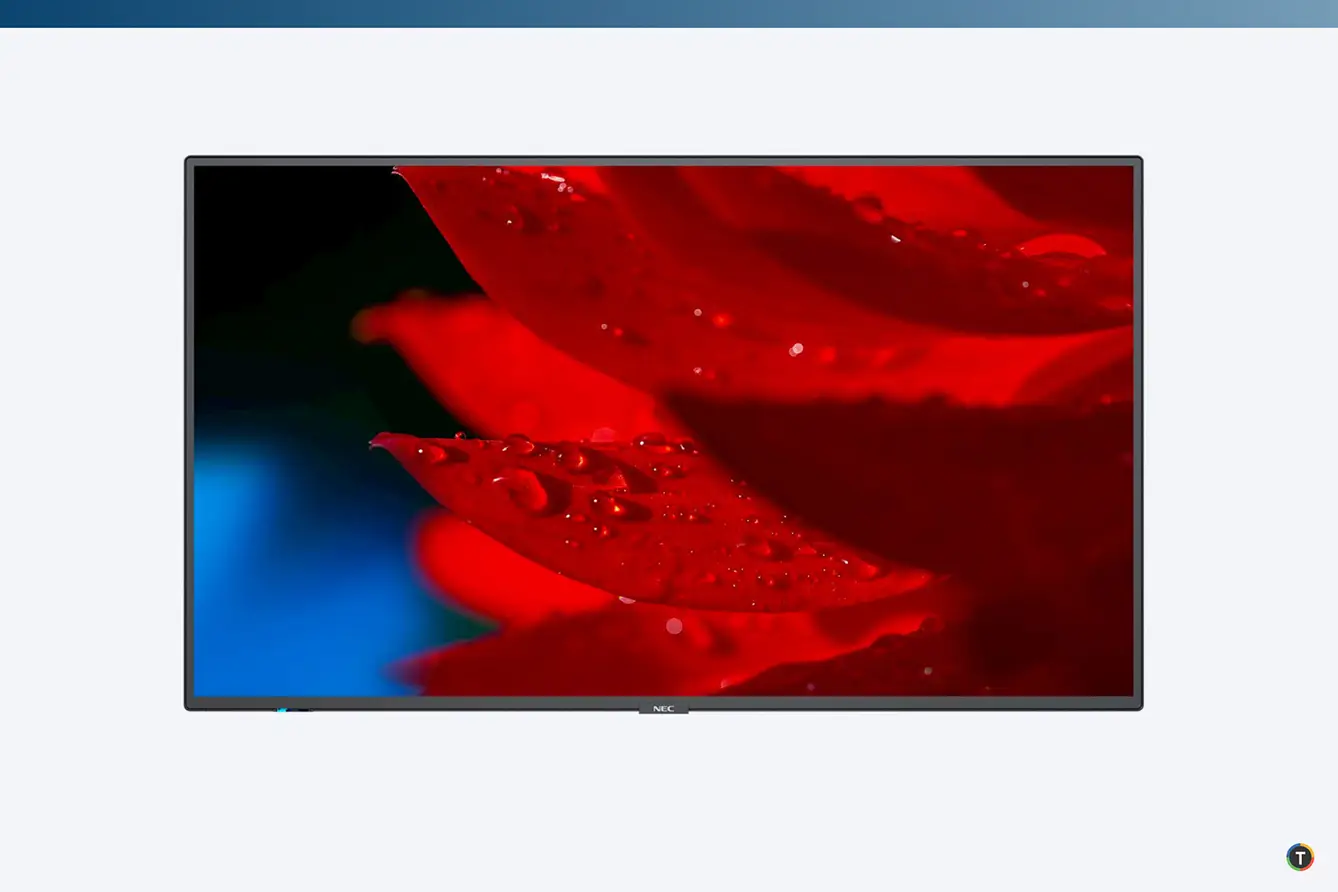
NEC Display Solutions has established itself as a leader in professional-grade digital signage, placing a strong emphasis on reliability and longevity. Unlike consumer TVs, NEC screens are specifically designed to withstand extended daily usage, often with built-in cooling systems, sturdier housings, and broader connectivity options. These displays also come with a comprehensive warranty, underscoring the company’s commitment to durability in commercial environments where any downtime can be costly. NEC’s product lines include options suited for various brightness levels and operational hours, catering to everything from corporate offices to transit hubs.
Recommended Options
The ME series, starting from roughly $1,600 for a 65-inch, is intended for 18/7 operation, making it a robust choice for educational institutions or healthcare facilities where screens typically run during normal business hours. They offer 4K resolution, decent brightness, and the essential commercial features necessary to handle networked digital signage without interruptions.
For 24/7 deployments in environments like airports or control rooms, the M series, with prices beginning around $2,300 for a 65-inch, provides enhanced panel durability and thermal management. These screens are built for intensive usage, offering higher brightness outputs and more sophisticated system controls to adapt to varying demands throughout the day or night.
Companies that anticipate challenging lighting conditions may consider alternative brands with specialized high-brightness models, although NEC itself has upper-tier lines for specific use cases. Still, for long-term stability and minimized maintenance visits, NEC remains a go-to option in commercial-grade digital signage.
PPDS Digital Signage Screens
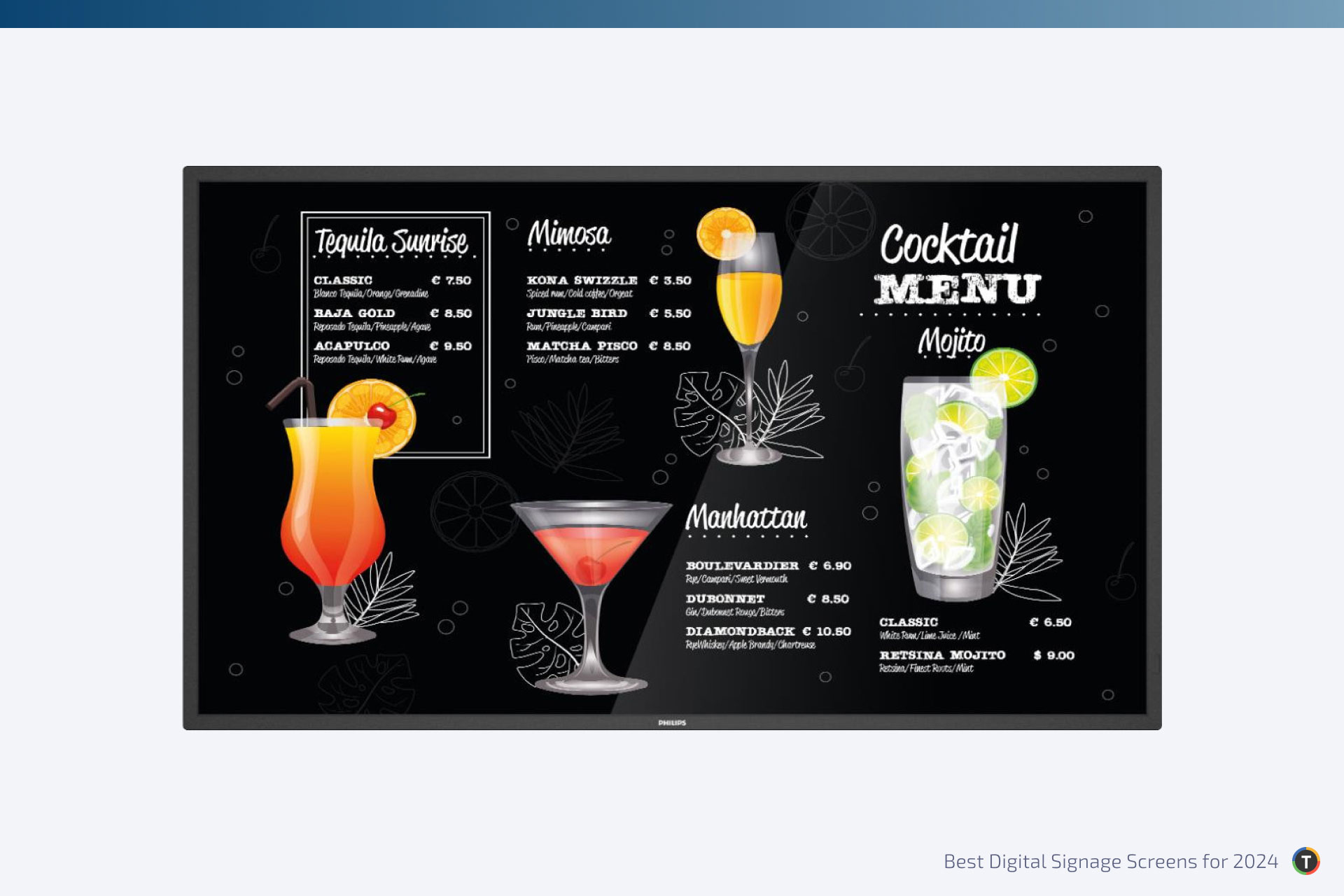
PPDS, the specialized division behind Philips Professional Display Solutions, is recognized for delivering commercial-grade screens that run on Android OS. This approach simplifies digital signage deployment by offering out-of-the-box access to software platforms like TelemetryTV. The lineup ranges from basic workplace-friendly panels to premium high-brightness and ruggedized displays that support continuous operation. PPDS screens are widely adopted across multiple industries, including retail, hospitality, and education, benefiting from the brand’s strong global distribution and support network.
Recommended Options
Businesses that want versatile screens for meeting rooms or shared offices can opt for the B-Line models, typically starting around $1,100 for a 65-inch. With Chromecast built in, these displays provide simple ways to share and manage content without the need for extra hardware.
The Q-Line and D-Line, from about $1,400 and $1,500 respectively for 65-inch versions, offer ready-to-use 4K playback and are designed for reliable 16/7 or even 24/7 usage. They come with more robust performance, making them suitable for a range of commercial applications from office lobbies to retail product showcases.
For demanding environments like industrial kitchens or brightly lit areas, the P-Line provides better durability and higher brightness levels starting at about $1,900 for a 65-inch screen. Those needing ultra-high brightness (over 2,000 nits) can consider the H-Line beginning at roughly $4,000. Whichever line you choose, PPDS’ Android-driven solutions keep installation and content updates straightforward while still offering professional-grade reliability.
Choosing the Best Digital Signage Player
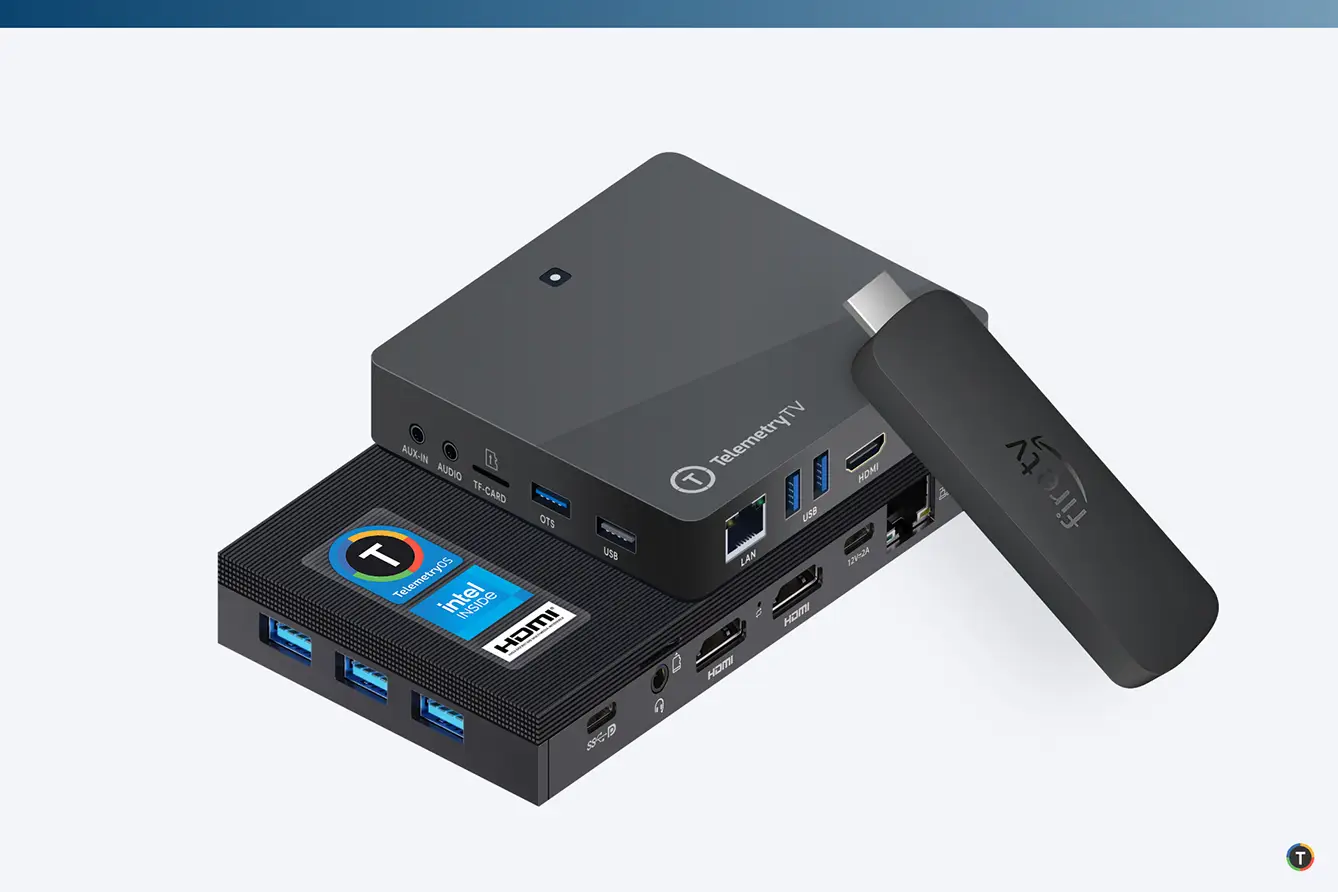
When diving into the world of digital signage, the choice of screens is crucial but it's just the beginning. Equally important are the software solutions and digital signage players that bring your content to life.
While some screens (especially consumer-focused ones) offer the convenience of built-in media players, creating a plug-and-play experience, professional displays often lack this feature. The all-in-one solutions typically fall short for complex signage needs or advanced applications. For those looking to deploy sophisticated content or set up multi-screen (video wall) signs, a more robust solution is necessary. This means finding a media player that not only supports multi-screen layouts but also boasts the computing power to handle demanding tasks seamlessly.
In our journey since 2015, the TelemetryTV technical team has rigorously evaluated over 300 digital signage players across various platforms. From this extensive testing, we've distilled our findings into a list of the top 10 players for 2025. Each selection is backed by detailed analysis of its strengths, weaknesses, and suitability for different digital signage scenarios. To guide your decision-making process, we invite you to explore our in-depth media player guide on our blog, ensuring you choose the hardware that best fits your project's unique requirements.
Powerful and Intuitive Cloud-Based Digital Signage Software
Once you've chosen the right digital signage screens and media players, the next essential step is to find software that not only delivers power and reliability but also offers comprehensive content management and simplifies the administration of users, devices, and maintenance. This is particularly vital in large-scale operations.
While some manufacturers might provide software for managing the hardware, they often fall short in offering content management solutions. Moreover, when your setup includes devices from various manufacturers, managing them all through a single vendor-specific platform becomes impossible. The ideal approach is to adopt a platform/vendor-agnostic solution that comes with strong content management features.
This is where TelemetryTV excels. It offers support of a wide range of media players/platforms, allowing you to remotely manage your hardware fleet. You can also do the same with users, content, or even your custom enterprise-grade signage apps via TelemetryTV's PaaS features.
Elevate Your Digital Signage Game
Experience how TelemetryTV can revolutionize your content and device management. Sign up for a free trial to see our comprehensive solution in action, tailored for managing diverse content, devices, and users.
Start for FreeConclusion
Commercial-grade screens are designed specifically for digital signage, offering a more reliable option for businesses. However, advancements in technology have made high-quality consumer-grade TVs suitable for professional setups as well. Ultimately, you should choose a display that meets your operational needs, ensuring effective content delivery and long-term durability in your specific business context.
